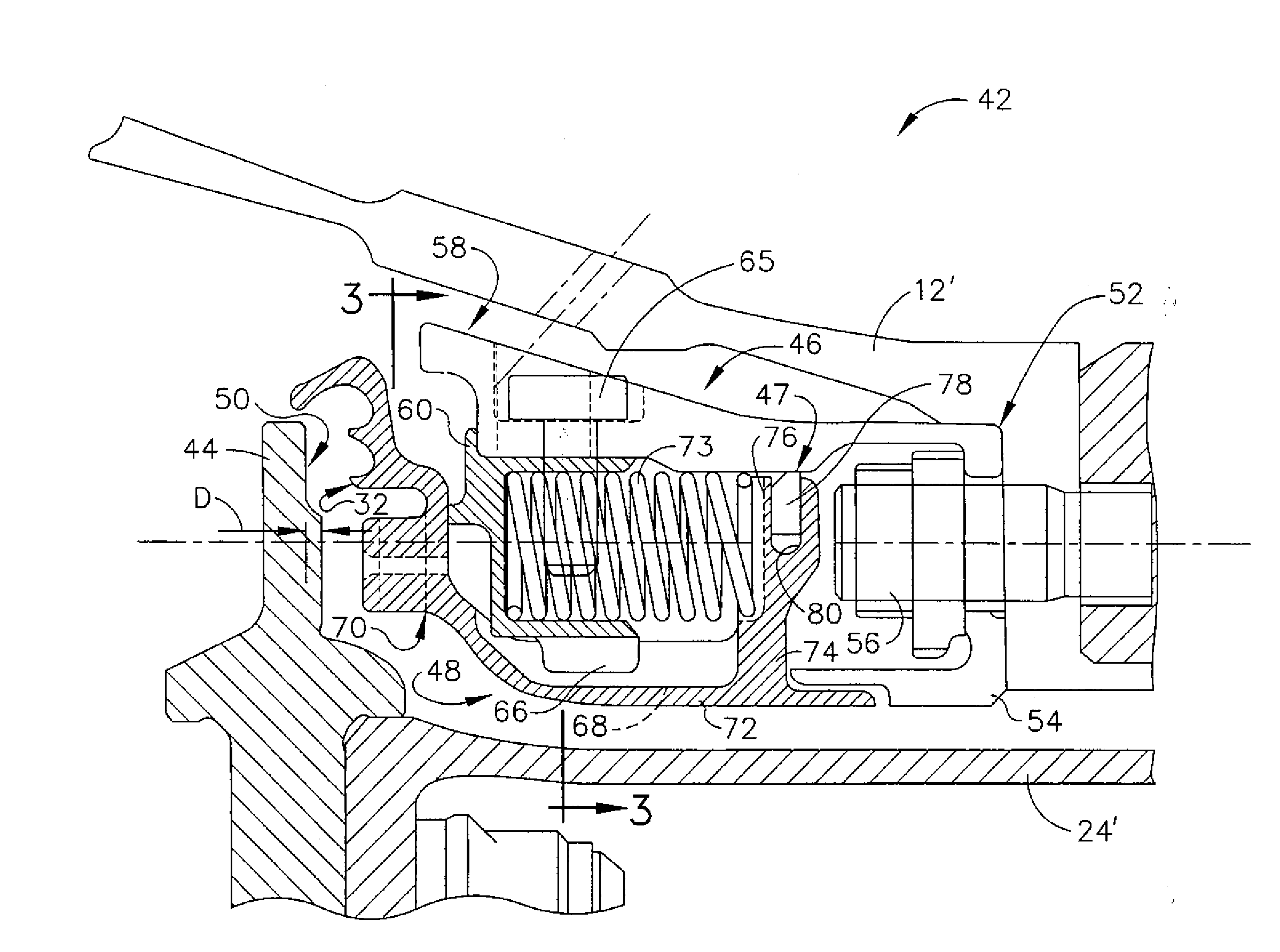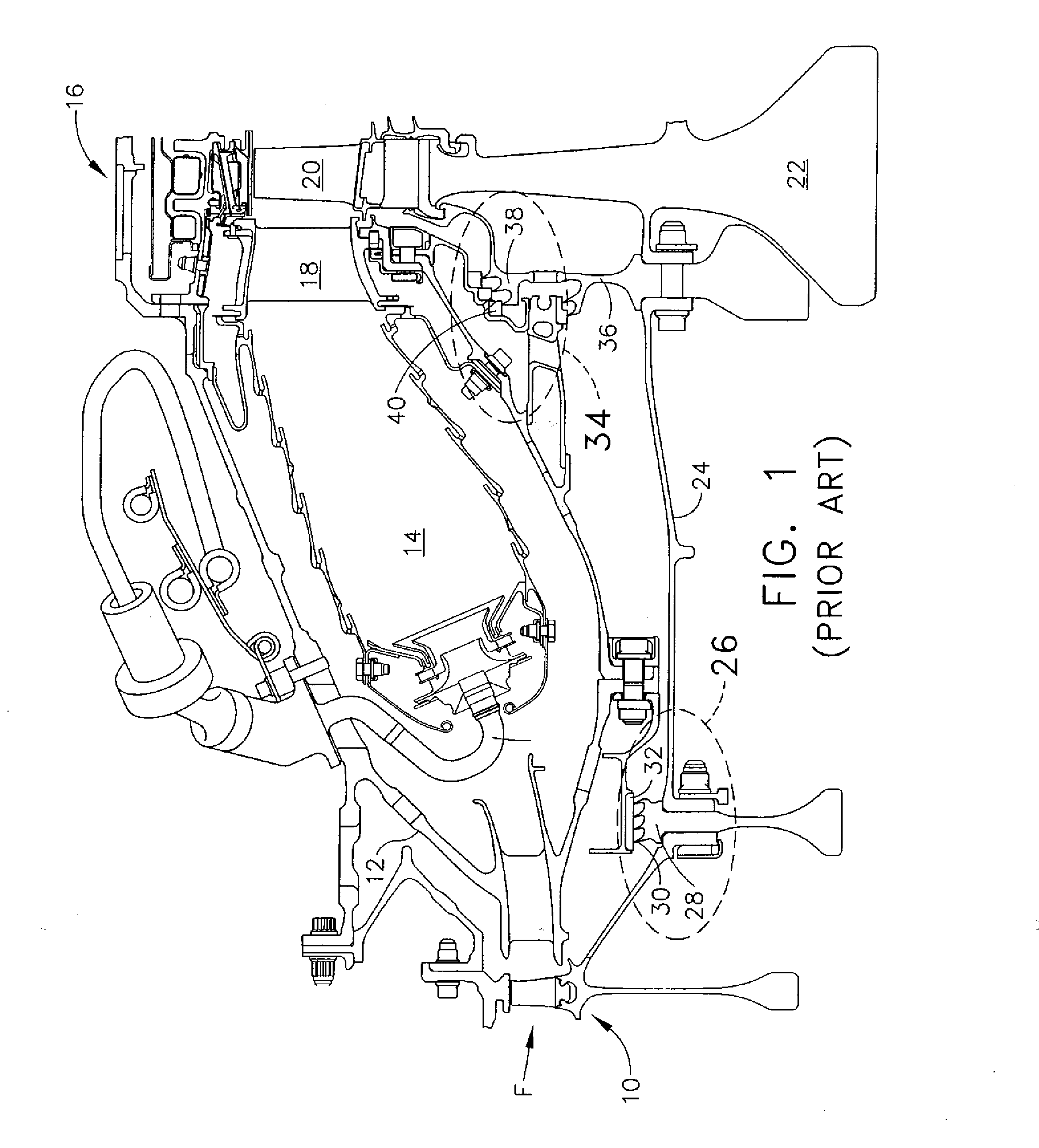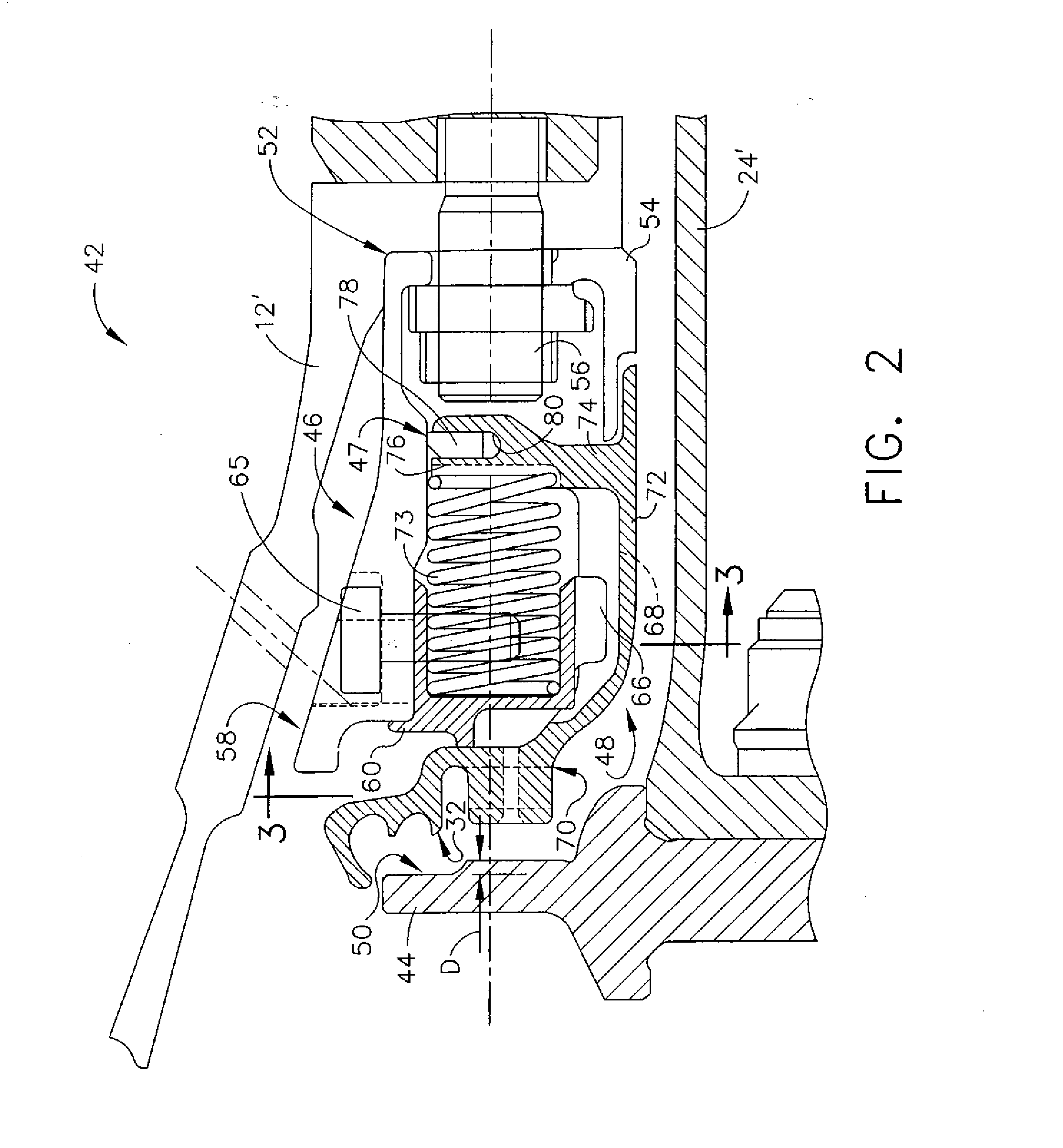Aspirating labyrinth seal
- Summary
- Abstract
- Description
- Claims
- Application Information
AI Technical Summary
Benefits of technology
Problems solved by technology
Method used
Image
Examples
Embodiment Construction
[0017]Referring to the drawings wherein identical reference numerals denote the same elements throughout the various views, FIGS. 2 and 3 show an exemplary seal assembly 42 which seals leakage between an area of relatively high pressure P(high) and an area of relatively low pressure P(low). In this particular example, the seal assembly 42 takes the place of a compressor discharge pressure (CDP) seal as described above and is disposed between a core shaft 24′ and a diffuser casing 12′, however it is to be understood that the features of the seal assembly 42 may be used in any application where a face seal is required. The basic components of the seal assembly 42 can include a rotor 44, a stationary seal support 46, and a seal body 48 (sometimes referred to as a “slider”), all disposed about a longitudinal axis of the engine. The rotor 44 is generally disk-shaped and defines a first axially facing primary seal surface 50.
[0018]The seal support 46 is a nonrotating, axially-extending co...
PUM
 Login to View More
Login to View More Abstract
Description
Claims
Application Information
 Login to View More
Login to View More - R&D
- Intellectual Property
- Life Sciences
- Materials
- Tech Scout
- Unparalleled Data Quality
- Higher Quality Content
- 60% Fewer Hallucinations
Browse by: Latest US Patents, China's latest patents, Technical Efficacy Thesaurus, Application Domain, Technology Topic, Popular Technical Reports.
© 2025 PatSnap. All rights reserved.Legal|Privacy policy|Modern Slavery Act Transparency Statement|Sitemap|About US| Contact US: help@patsnap.com



